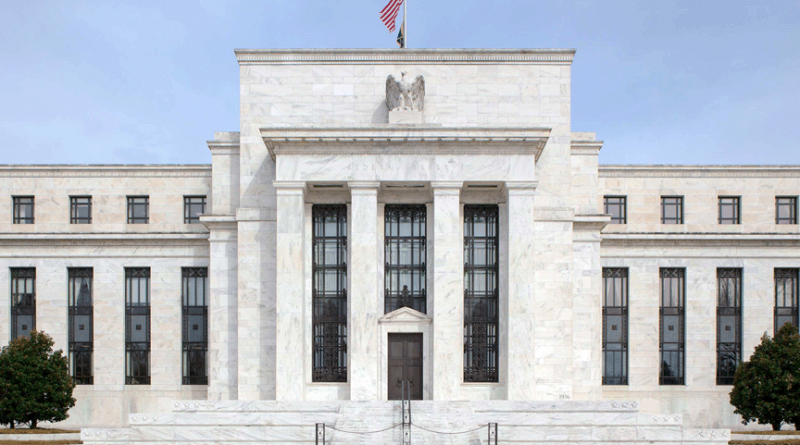Central Bank independence and the mandate—evolving views
Jerome H Powell is Chair of the Board of Governors of the Federal Reserve System
I will address three main points. First, the Federal Reserve’s monetary policy independence is an important and broadly supported institutional arrangement that has served the American public well.
Second, the Fed must continuously earn that independence by using our tools to achieve our assigned goals of maximum employment and price stability, and by providing transparency to facilitate understanding and effective oversight by the public and their elected representatives in Congress.
Third, we should ‘stick to our knitting’ and not wander off to pursue perceived social benefits that are not tightly linked to our statutory goals and authorities.
Central bank independence and transparency
On the first point, the case for monetary policy independence lies in the benefits of insulating monetary policy decisions from short-term political considerations1. Price stability is the bedrock of a healthy economy and provides the public with immeasurable benefits over time.
But restoring price stability when inflation is high can require measures that are not popular in the short term as we raise interest rates to slow the economy.
The absence of direct political control over our decisions allows us to take these necessary measures without considering short-term political factors. I believe that the benefits of independent monetary policy in the US context are well understood and broadly accepted2.
In a well-functioning democracy, important public policy decisions should be made, in almost all cases, by the elected branches of government. Grants of independence to agencies should be exceedingly rare, explicit, tightly circumscribed, and limited to those issues that clearly warrant protection from short-term political considerations.
With independence comes the responsibility to provide the transparency that enables effective oversight by Congress, which, in turn, supports the Fed’s democratic legitimacy.
At the Fed, we treat this as an active, not passive, responsibility, and over the past several decades we have steadily broadened our efforts to provide meaningful transparency about the basis for, and consequences of, the decisions we make in service to the American public. We are tightly focused on achieving our statutory mandate and on providing useful and appropriate transparency3.
In a well-functioning democracy, important public policy decisions should be made, in almost all cases, by the elected branches of government
Sticking to our mandate
It is essential that we stick to our statutory goals and authorities, and that we resist the temptation to broaden our scope to address other important social issues of the day4. Taking on new goals, however worthy, without a clear statutory mandate would undermine the case for our independence.
In the area of bank regulation, too, the Fed has a degree of independence, as do the other federal bank regulators. Independence in this area helps ensure that the public can be confident that our supervisory decisions are not influenced by political considerations5.
Today, some analysts ask whether incorporating into bank supervision the perceived risks associated with climate change is appropriate, wise, and consistent with our existing mandates.
Addressing climate change seems likely to require policies that would have significant distributional and other effects on companies, industries, regions, and nations. Decisions about policies to directly address climate change should be made by the elected branches of government and thus reflect the public’s will as expressed through elections.
At the same time, in my view, the Fed does have narrow, but important, responsibilities regarding climate-related financial risks. These responsibilities are tightly linked to our responsibilities for bank supervision6. The public reasonably expects supervisors to require that banks understand, and appropriately manage, their material risks, including the financial risks of climate change.
But without explicit congressional legislation, it would be inappropriate for us to use our monetary policy or supervisory tools to promote a greener economy or to achieve other climate-based goals7. We are not, and will not be, a ‘climate policymaker’.
Endnotes
1. In the past several decades, support for arrangements in which central banks made monetary policy decisions in pursuit of legislated goals of economic and price stability has been buttressed by theoretical and empirical research contributions, including by Kenneth Rogoff, on the benefits of central bank independence. See Rogoff (1985) as well as the discussion below of the distinction between goal independence and instrument independence. With regard to empirical evidence on the matter, see Alesina and Summers (1993) as well as the subsequent research literature of the past three decades, including Crowe and Meade (2008). Bernanke (2010) and Tucker (2018) provide overviews of the development of central bank independence.
2. Our situation is different from that of the European Central Bank, whose independence is enumerated in Article 130 of the Treaty on the Functioning of the European Union, which is available from the European Union at https://lexparency.org/eu/TFEU/ART_130.
3. We continue to strive to improve our transparency. Over my five years as Chair, I have pursued this aim by extending post-meeting press conferences to all FOMC meetings and instituting ongoing personal dialogue with legislators. This continuous dialogue goes well beyond the regular testimony, established by statute, in which I report to the congressional committees that have oversight responsibilities regarding monetary policy.
4. Although the Federal Reserve has been independent since its inception in 1914, its dual mandate only became part of the law in 1977 (see Bernanke, 2010). The existence of the dual mandate reflects the fact that the Federal Reserve’s monetary policy independence corresponds to operational, or instrument, independence, rather than goal independence. See Debelle and Fischer (1994) for an analysis of the distinction between types of independence.
5. Like our monetary policy independence, our independence in this area comes with a high level of transparency about our policies and procedures.
6. For details, see Board of Governors (2022).
7. While US monetary policy has the dual mandate of maximum employment and price stability, some other central banks have somewhat more expansive mandates. The Bank of England and the European Central Bank both have a primary mandate to maintain price stability but a secondary mandate to support the economic policies of the UK government and the European Union, respectively; see the Bank of England Act 1998, part II(11), available from the UK National Archives at https://www.legislation.gov.uk/ukpga/1998/11/contents, and the Treaty on the Functioning of the European Union, Article 127(1), available from the European Union at https://lexparency.org/eu/TFEU/ART_127.
References
Alesina, Alberto, and Lawrence H Summers (1993). “Central Bank Independence and Macroeconomic Performance: Some Comparative Evidence,” Journal of Money, Credit and Banking, vol. 25 (May), pp. 151-62.
Bernanke, Ben S (2010). “Central Bank Independence, Transparency, and Accountability,” speech delivered at the Institute for Monetary and Economic Studies International Conference, Bank of Japan, Tokyo, Japan, May 25.
Board of Governors of the Federal Reserve System (2022). “Federal Reserve Board Invites Public Comment on Proposed Principles Providing a High-Level Framework for the Safe and Sound Management of Exposures to Climate-Related Financial Risks for Large Banking Organizations,” press release, December 2.
Crowe, Christopher, and Ellen E Meade (2008). “Central Bank Independence and Transparency: Evolution and Effectiveness,” European Journal of Political Economy, vol. 24 (December), pp. 763–77.
Debelle, Guy, and Stanley Fischer (1994). “How Independent Should a Central Bank Be? (PDF)” in Goals, Guidelines, and Constraints Facing Monetary Policymakers, proceedings of a conference held in North Falmouth, Massachusetts, in June 1994. Boston: Federal Reserve Bank of Boston, pp. 195-221.
Rogoff, Kenneth (1985). “The Optimal Degree of Commitment to an Intermediate Monetary Target,” Quarterly Journal of Economics, vol. 100 (November), pp. 1169-89.
Tucker, Paul (2018). Unelected Power: The Quest for Legitimacy in Central Banking and the Regulatory State. Princeton, N.J.: Princeton University Press.
This article is based on remarks made at the Symposium on Central Bank Independence, Sveriges Riksbank, Stockholm, Sweden, January 10, 2023.



